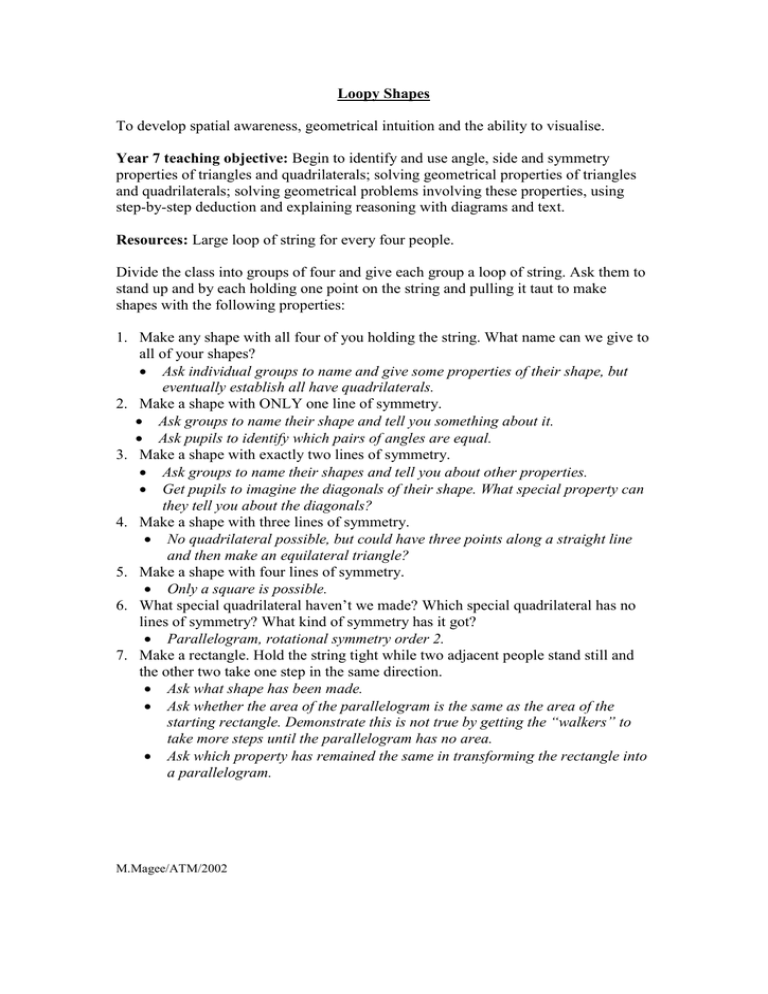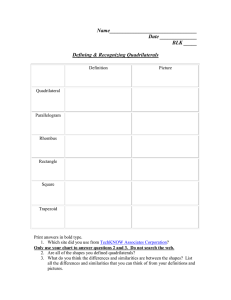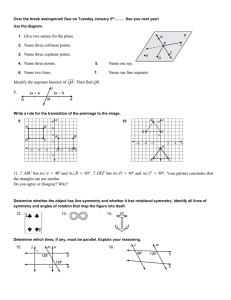Loopy Shapes Year 7 teaching objective:
advertisement

Loopy Shapes To develop spatial awareness, geometrical intuition and the ability to visualise. Year 7 teaching objective: Begin to identify and use angle, side and symmetry properties of triangles and quadrilaterals; solving geometrical properties of triangles and quadrilaterals; solving geometrical problems involving these properties, using step-by-step deduction and explaining reasoning with diagrams and text. Resources: Large loop of string for every four people. Divide the class into groups of four and give each group a loop of string. Ask them to stand up and by each holding one point on the string and pulling it taut to make shapes with the following properties: 1. Make any shape with all four of you holding the string. What name can we give to all of your shapes? Ask individual groups to name and give some properties of their shape, but eventually establish all have quadrilaterals. 2. Make a shape with ONLY one line of symmetry. Ask groups to name their shape and tell you something about it. Ask pupils to identify which pairs of angles are equal. 3. Make a shape with exactly two lines of symmetry. Ask groups to name their shapes and tell you about other properties. Get pupils to imagine the diagonals of their shape. What special property can they tell you about the diagonals? 4. Make a shape with three lines of symmetry. No quadrilateral possible, but could have three points along a straight line and then make an equilateral triangle? 5. Make a shape with four lines of symmetry. Only a square is possible. 6. What special quadrilateral haven’t we made? Which special quadrilateral has no lines of symmetry? What kind of symmetry has it got? Parallelogram, rotational symmetry order 2. 7. Make a rectangle. Hold the string tight while two adjacent people stand still and the other two take one step in the same direction. Ask what shape has been made. Ask whether the area of the parallelogram is the same as the area of the starting rectangle. Demonstrate this is not true by getting the “walkers” to take more steps until the parallelogram has no area. Ask which property has remained the same in transforming the rectangle into a parallelogram. M.Magee/ATM/2002


